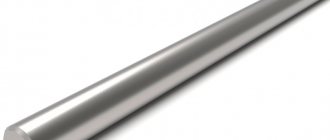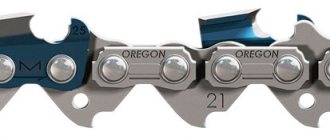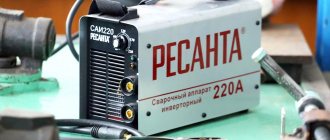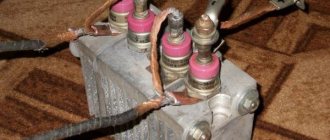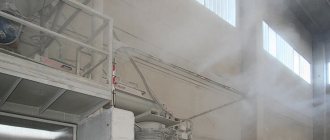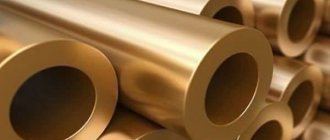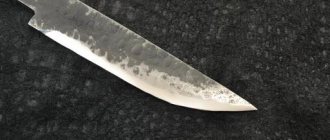What is zinc? Zinc - silvery-white metal with a bluish tint. In its pure form in nature zinc as a chemical element practically never occurs. According to the periodic table
Zinc - chemical element of the 12th group (according to the outdated classification - a side subgroup of the second group), the fourth period of the periodic system, Designation symbol Zn (lat. Zincum)
Five stable isotopes are currently well studied zinca, with mass numbers respectively 64,66,67,68,70. The most common among stable isotopes zinc considered to be Zn 64 (48.89%). Nine radioactive zinc isotopes obtained artificially. These include 65 Zn. This is the longest living zinc an isotope with a half-life of 245 days, so it is used as an isotope tracer.
| Name, symbol, number | Zinc / Zincum (Zn), 30 |
| Atomic mass (molar mass) | 65.38(2)[1] a. e.m. (g/mol) |
| Electronic configuration | [Ar] 3d10 4s2 |
| Atomic radius | 138 pm |
Zinc is a brittle metal under standard climatic conditions. After heating zinc to 100 degrees and above (up to 150 degrees C), changes occur in the crystal lattice, as a result of which the metal becomes ductile, flexible, and can be subjected to additional mechanical processing. The structure of the crystal lattice is hexagonal.
| Lattice structure | hexagonal |
| Lattice parameters | a=2.6648 c=4.9468 Å |
| c/a ratio | 1,856 |
| Debye temperature | 234K |
Story
In the ancient world they knew brass (copper-zinc alloy). The Englishman William Champion managed to obtain zinc as a metal by the 18th century. He founded the first plant. Later, his compatriots developed a method of rolling metal.
However, the pioneer in history was the German Andreas Marggraff. He worked out a similar method, describing the technology in detail.
In Russia, a trial batch of zinc was received by 1905.
Ten years later, zinc was mined electrolytically in North America.
The terms zincum, zinken were first used by the chemist and physician of the Middle Ages Paracelsus. It is similar to the German word for "prong". This is what zinc metal fragments look like.
Chemical and physical properties and history of the metal
Despite its use since ancient times for various purposes, pure zinc has never been obtained. It was only at the beginning of the eighteenth century that William Champion was able to discover a method for isolating this element from ore using distillation. In 1838, he patented his discovery, and 5 years later, in 1843, William Champion launched the first ever smelting plant for this metal. Some time later, Andreas Sigismund Marggraff discovered another method. This method was considered more advanced. Therefore, it is Marggraf who is often considered the discoverer of pure zinc. Subsequent discoveries only contributed to the expansion of its popularity.
Physico-chemical characteristics
When exposed to air, the shiny metal becomes coated with an oxide film. Due to this chemical property it looks dull.
| Properties of the atom | |
| Name, symbol, number | Zinc / Zincum (Zn), 30 |
| Atomic mass (molar mass) | 65.38(2) a. e.m. (g/mol) |
| Electronic configuration | [Ar] 3d10 4s2 |
| Atomic radius | 138 pm |
| Chemical properties | |
| Covalent radius | 125 pm |
| Ion radius | (+2e) 74 pm |
| Electronegativity | 1.65 (Pauling scale) |
| Electrode potential | -0.76 V |
| Oxidation states | 0; +2 |
| Ionization energy (first electron) | 905.8(9.39) kJ/mol (eV) |
| Thermodynamic properties of a simple substance | |
| Density (at normal conditions) | 7.133 g/cm³ |
| Melting temperature | 419.6 °C |
| Boiling temperature | 906.2 °C |
| Ud. heat of fusion | 7.28 kJ/mol |
| Ud. heat of vaporization | 114.8 kJ/mol |
| Molar heat capacity | 25.4 J/(K mol) |
| Molar volume | 9.2 cm³/mol |
| Crystal lattice of a simple substance | |
| Lattice structure | hexagonal |
| Lattice parameters | a=2.6648 c=4.9468 Å |
| c/a ratio | 1,856 |
| Debye temperature | 234K |
| Other characteristics | |
| Thermal conductivity | (300 K) 116 W/(m K) |
| CAS number | 7440-66-6 |
Interaction with metals begins at 450°C.
The main disadvantage of the metal : the increase in fragility by several times from a small amount of impurities.
When bending a zinc plate, you can hear a cracking sound. It is generated by the lattice structure.
Properties of metal and use in production
The color of pure metal is silver-white. Quite fragile at a temperature of twenty to twenty-five degrees (i.e. room temperature), especially if it contains impurities. When heated to 100 - 150 degrees Celsius, the metal becomes ductile and malleable. When heated above one hundred to one hundred and fifty degrees, fragility returns again.
- The melting point of zinc is 907 degrees Celsius.
- The relative atomic mass of zinc is 65.38 a. f.u. ± 0.002 a.m. eat.
- The density of zinc is 7.14 g/cm3.
Zinc metal ranks fourth in terms of use in various areas of production:
- It is used in the mining and processing of gold and silver ore.
- Galvanization protects steel from corrosion.
- Metal plays an important role in batteries and accumulators.
- Illustrations in magazines and books are printed using zinc plates.
- In medicine, zinc oxide is used as an antiseptic.
- Used in automotive production.
Being in nature
The presence of native zinc in nature has not been recorded, only almost seven dozen minerals.
The most popular one is sphalerite. This is zinc sulfide plus impurities that give it different colors.
Sphalerite
The second name - zinc blende - is due to the difficulty of identifying the element (from the ancient Greek σφαλερός - deceiver). It is classified as the primary, “parent” of other minerals: smithsonite, zincite, calamine. And also “chipmunk” ore. This is how the inhabitants of Altai dubbed the motley conglomerate of zinc blende with brown spar.
Content in food
It is recommended that a healthy adult consume about 8-10 mg of this element per day. The daily intake varies depending on the age, gender and individual characteristics of the person.
A lot of zinc is found in seafood, pumpkin and sunflower seeds, and some cereals.
There are mineral waters in nature that are also rich in zinc.
Reserves
Markers for zinc mining are acidic or basic rocks of volcanic origin.
The average metal content in the planet's crust is 8.3x10-3%.
This is a mobile active element: rivers, thermal waters, and groundwater transport it with lead, hydrogen sulfide, and clays. As a result, a precipitate of zinc sulfides is formed.
Australia, Bolivia, Kazakhstan, and Iran have large reserves.
In Russia it is Taimyr, Krasnoyarsk Territory. Reserves are estimated at half a million tons.
How do impurities change the properties of zinc
Manufacturers limit the content of cadmium, tin and lead in cast zinc alloys to suppress intergranular corrosion.
Tin is a harmful impurity. The metal does not dissolve and is released from the melt - it contributes to the fragility of zinc castings. Cadmium, on the contrary, dissolves in zinc and reduces its ductility when hot. Lead increases the solubility of the metal in an acidic environment.
Iron increases the hardness of zinc, but reduces its strength. At the same time, it complicates the process of filling molds during casting.
Copper increases the hardness of zinc, but reduces its ductility and resistance to corrosion. The copper content also interferes with the recrystallization of zinc.
The most harmful impurity is arsenic. Even with a small amount of it, the metal becomes brittle and less ductile.
To avoid edge cracking during hot rolling of zinc, the antimony content should not exceed 0.01%. When hot, it increases the hardness of zinc, depriving it of good ductility.
Receiving technology
Due to its chemical and physical properties, the metal is the fourth most popular in the world (only iron, aluminum, and copper are ahead). World production amounts to millions of tons annually.
It is mined from polymetallic ores (0.9-3.9% zinc). Ores are enriched by separation flotation. The resulting concentrates are: zinc (52-61%), lead, copper.
Electrolytic (hydrometallurgical) method
The main method for obtaining pure zinc:
- The concentrates are fired and treated with sulfuric acid.
- The result is dissolved sulfate, which is removed from impurities by precipitating with zinc dust.
- The product is loaded into baths with an internal lead or plastic coating.
- The current is started (electrolysis process).
- Zinc is accumulated on cathodes.
From there it is scraped off and sent for smelting in a furnace.
Pyrometallurgical (distillation) method
The concentrate is fired, sintered, and then reduced with coke or coal. The resulting metal vapors are converted into condensate and poured into molds.
Liquid metal is purified from iron and lead by settling at 500°C. Impurities remain at 1.3%. Purity of 99.994% (plus cadmium extraction) is achieved by rectification.
Applications of zinc
To protect metals from corrosion
Pure zinc is used to protect metals from corrosion. The base is covered with a thin film. This process is called metallization.
In the automotive industry
Zinc-based alloys are used to decorate car interiors and in the production of door handles, locks, mirrors and windshield wiper housings.
Zinc oxide is added to car tires, which improves the quality of the rubber.
In batteries, accumulators and other chemical power sources, zinc is used as a material for the negative electrode. In the production of electric vehicles, zinc-air batteries are used, which have a high specific energy intensity.
In the production of jewelry
Jewelers add zinc to gold-based alloys. As a result, they are easy to forge and become plastic - they firmly connect small parts of the product to each other.
The metal also brightens jewelry, which is why it is often used in white gold.
Galvanizing methods
Metals rust in water and humid air. To solve this problem, they are coated with a protective layer. The most common material is zinc. At the same time, protection against exposure to current and chemicals is provided.
Various methods of galvanizing metal create a coating with a thickness of 0.005 - 1.5 mm.
The metal layer is applied in several ways.
Cold
Can be used on any materials except magnesium alloys and high-strength steel.
The surface is cleaned of dust, dirt, rust, and scale. Apply the composition for cold galvanizing.
Cold galvanizing is the only method that can be carried out in a home workshop.
Hot
The sample is cleaned, washed, etched, and immersed in a bath of molten zinc. A coating of 0.035-0.097 mm is formed on the surface.
The hot galvanizing method is optimal in terms of price – reliability – versatility.
Galvanic
A layer of zinc is applied to the cleaned surface by electrolysis. The electrolyte is a water-zinc medium.
The impact of direct current on the surface of the workpiece (cathode) deposits zinc ions (released by the electrolyte). The anode is zinc material.
The technology allows you to create a layer of 0.005 - 0.5 mm.
Advantages of the method:
- High performance.
- Low cost.
- Uniform coverage.
- Work with forms of any structure, including porous ones.
- Creation of decorative galvanization.
These characteristics have made the method the most popular.
Disadvantages: harmful to the environment, fragility of the product if the technology is violated.
Gas-thermal
A jet of zinc suspension is sprayed onto the surface of the product at an angle.
Minuses:
- Uneven layer thickness.
- Difficulty of process control.
- Expensive (three to four times) compared to other methods.
Plus: suitable for processing products of any shape and size. Thermal diffusion
The retort with the charge and samples is placed in a chamber equipped with an inductor. The heat from the retort and products heats the charge.
In the magnetic field of the inductor, currents are formed in the products, heating them to 500-800°C in half an hour.
Result: 98% of the top coating layer is pure zinc.
The thickness of the metal layer in the thermal diffusion method is determined by the parameters of the products, the charge, heating time, and temperature.
origin of name
The very name that we are accustomed to seeing in Mendeleev’s periodic table was first discovered by people in the works described by the Swiss alchemist Paracelsus. It was he who in those days called this metal zinken.
Subsequently, the name was adapted for other languages. Translated, this word means “prong.”
Paracelsus gave this name to zinc precisely because the metal resembles crystals with needles or some teeth on the surface.
Where is it used?
The properties of the metal, its alloys, and compounds determined their use in metallurgy, electrical engineering, and medicine.
Pure metal
Main directions:
- Negative electrode of batteries, accumulators.
- Reducer of precious metals.
- Protective coating of steel against corrosion.
- Component of hard solders to increase fusibility.
- Metal extractor from rough lead.
Until the mid-20th century, a popular area of application for zinc was printing. The zincography method was used to create black and white illustrations in newspapers or books. An image was etched onto a zinc plate with acid. Then impressions were made from it on a printing machine.
Zinc ingots
Alloys
Zinc is in demand as a component of metal alloys. For example, brass.
It is used by machine builders for precision casting:
- Automotive accessories.
- Carburetor box shell.
- Bolts of traumatic pistols.
A fifth of the raw materials are used for the production of tires and oil paints.
Connections
Metal compounds created by nature or man have found application:
- Chloride – metal soldering, fiber production.
- Telluride, selenide, phosphite are semiconductors.
- Selenide is used in the manufacture of special types of glass for lasers.
- Oxide is the source material for zinc white.
- Sulfide is a component of phosphors (flexible panels, screens).
Metal phosphite is used to kill rodents.
Zinc alloys
Zinc-based alloys with the addition of copper, magnesium and aluminum have a low melting point and have good fluidity. They are easy to process, weld and solder.
Brass
There are two-component and multi-component brasses.
Two-component brass is a zinc alloy with a high copper content. There is yellow brass with copper in the amount of 67%, golden copper or tombac - 75%, and green - 60%. Such alloys can be deformed at temperatures of 300 °C.
Multicomponent brasses, in addition to the 2 main metals, consist of other additives: nickel, iron, lead or manganese. Each of the elements affects the properties of the alloy.
TsAM
TsAM is a family of zinc alloys. They contain magnesium, aluminum and copper. Such zinc alloys are used in foundries. They contain aluminum in the amount of 4%.
The main area of application of TsAM alloys is zinc die casting. Alloys of this family have low melting points and good casting properties. Their high strength allows the production of durable and complex parts.
Virenium
The alloy consists of zinc (24.5%), copper (70%), nickel (5.5%).
Meaning for humans
Zinc is an essential component of body tissue. The second most abundant microelement after iron. Without it, proteins and nucleic acids are not synthesized.
Life processes
The metal is involved in the following processes:
- Tissue regeneration.
- Metabolism of vitamin E.
- Synthesis of testosterone, insulin, growth hormones, etc.
- Alcohol breakdown.
- Functioning of the prostate, sperm production.
The human body of average build contains up to 2 g of zinc compounds.
Places of metal accumulation are muscle tissue, liver, pancreas, prostate.
Nutrition
The daily “standard” of zinc for women/men is 9/12 mg.
Rich in zinc:
- Pumpkin and sunflower seeds.
- Meat.
- Hard varieties of cheese.
- Oysters.
- Oatmeal.
- Peas, beans, chickpeas, mung beans.
- Bitter chocolate.
Zinc deficiency causes irritability and depression. On the physical plane – anemia, unmotivated exhaustion, amnesia, weakened vision, allergies.
The use of metal in medicine is zinc oxide (zinc ointment). This is a popular antiseptic and anti-inflammatory agent.
How to distinguish zinc from aluminum?
Alternative options to answer the question of how to distinguish zinc from aluminum, available at home, are the following.
- Recognition by physical and chemical characteristics
Minimum school knowledge is sufficient to determine the composition and variety of an element. Aluminum has a silver tint, is light weight, and flexible. Zinc has a bluish tint, is heavier than the previous material, and does not bend under normal conditions. Fragile, breaks quickly.
- Determination by density parameters
To determine the type of metal by density, you will need a measuring cylinder and water. The essence of the technique is to gradually immerse the product in liquid. When a body is immersed in water, a certain amount of liquid is released. Using the simplest physical formula allows you to calculate the density of the material. The rest is left to the tabular data. If the resulting figure is close to 2.7/ml, then you have 100% aluminum.
- Metal detection by magnet
Many elements are attracted by a magnet. However, this property does not apply to Al. Therefore, to determine the quality characteristics, it is enough to bring a magnet to the product. If the metal does not react in any way, and it has a silvery tint, then this means aluminum.
The only negative aspect of the technique is the impossibility of isolating the alloy. If it contains a large amount of aluminum, the magnet will also have no effect on it. Therefore, additional methods will have to be used to determine the purity of the alloy.
- Thermal conductivity testing
The thermal conductivity parameters of aluminum are much higher than those of other elements of the periodic table. Therefore, the same volume of liquid under the same conditions in an aluminum pan is brought to a boil much faster. The maximum melting point of Al is 660 degrees.
- Recognition of aluminum by chemical methods
Al is easy to determine. It is enough to apply alkali to a previously cleaned surface. After some time, the surface will oxidize, which can be seen visually.
A similar reaction occurs when metal is exposed to acid, including lemon juice. The aggressive effects of acid are manifested by the appearance of dark gray spots that disturb the appearance of the product.
Warning
Uncontrolled entry of metal into the body causes poisoning. It is generated by sulfates or chlorides. They can form when storing food in galvanized containers.
Symptoms of zinc vapor poisoning:
- Intense thirst.
- Sweetish taste in the mouth.
- Loss or decrease in appetite.
- Dry cough.
The person feels overwhelmed and tired. Feels drowsy, chest pain.
For severe poisoning, 1 gram of zinc sulfate is sufficient.
You need to remove toxins immediately. Their presence provokes anemia, growth inhibition, and infertility.
Reflection of zinc deficiency on human health
The lack of this microelement in the body is caused by the appearance of some emerging symptoms. Namely, the following may appear: allergies, dizziness, rashes on the body, blurred vision and hearing, and increased fatigue.
Many people notice the appearance of similar symptoms, but rarely associate this with an excess or deficiency of any microelements. Although often when regulating their normal consumption, all pathological processes disappear on their own.
In order to regulate the normal content of vitamins and minerals, doctors often prescribe zinc-containing drugs. They have a positive effect not only on a person’s internal health, but also have a beneficial effect on his appearance.
Zinc picolinate is very often prescribed. Essentially it is a mixture of zinc and picolinic acid. This combination enhances the beneficial effects on human health.
The absorption of this microelement is different for each person. Therefore, doctors must take this fact into account. In some cases, zinc gluconate is prescribed. In others it is acetate. Zinc sulfate is also prescribed for treatment, but its content must be strictly regulated by the attending physician.
General information:
| 100 | General information | |
| 101 | Name | Zinc |
| 102 | Former name | |
| 103 | Latin name | Zincum |
| 104 | English name | Zinc |
| 105 | Symbol | Zn |
| 106 | Atomic number (number in table) | 30 |
| 107 | Type | Metal |
| 108 | Group | Amphoteric, transition, non-ferrous metal |
| 109 | Open | Known since ancient times |
| 110 | Opening year | before 1000 BC |
| 111 | Appearance, etc. | Brittle bluish-white metal |
| 112 | Origin | Natural material |
| 113 | Modifications | |
| 114 | Allotropic modifications | |
| 115 | Temperature and other conditions for the transition of allotropic modifications into each other | |
| 116 | Bose-Einstein condensate | |
| 117 | 2D materials | |
| 118 | Content in the atmosphere and air (by mass) | 0 % |
| 119 | Content in the earth's crust (by mass) | 0,0078 % |
| 120 | Content in seas and oceans (by mass) | 5,0·10-7 % |
| 121 | Content in the Universe and space (by mass) | 0,00003 % |
| 122 | Abundance in the Sun (by mass) | 0,0002 % |
| 123 | Content in meteorites (by mass) | 0,018 % |
| 124 | Content in the human body (by weight) | 0,0033 % |
